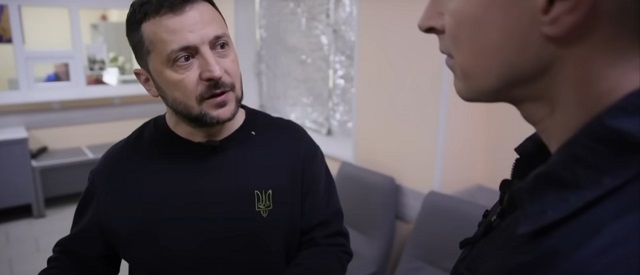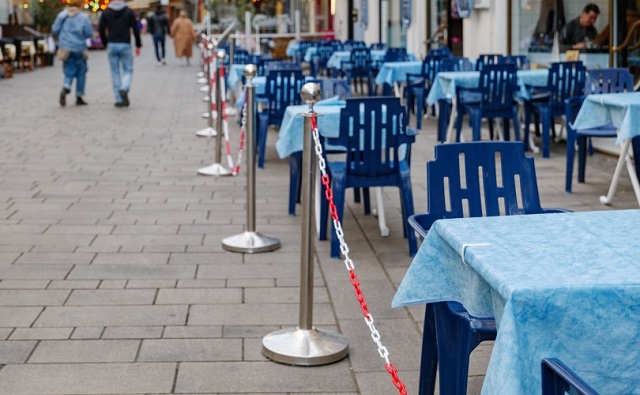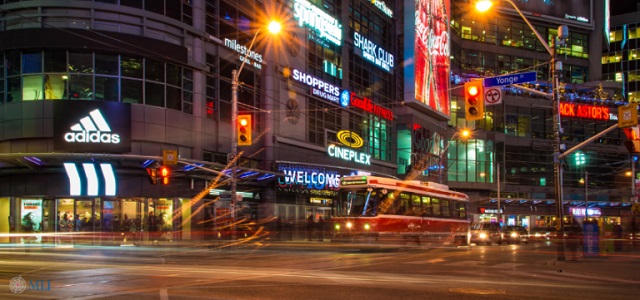Agriculture
Diesel won’t be easily replaced on the farm
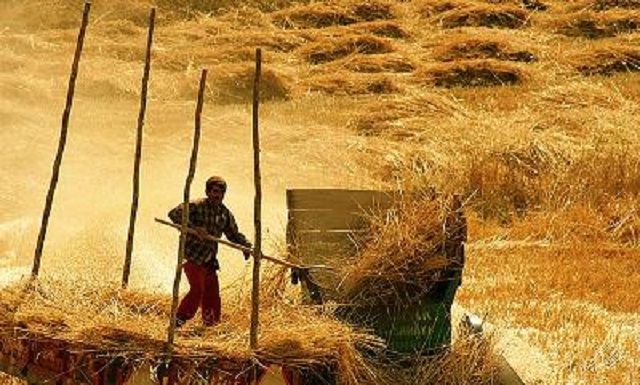
From the Frontier Centre for Public Policy
By Brian Zinchuk, contributor to the Frontier Centre for Public Policy.
I was out at the cabin, trying to trim the reeds and weeds along the water, when I came across a stark reminder of how good we have it because of fossil fuels.
I was using the electric whipper snipper when the reel head decided to disassemble itself. But I still had a lot of weeds that needed to be cut.
So I went into the shed and dug out the old scythe Uncle Larry, the previous owner, put in there some time in the preceding 40 years. That scythe likely dates back to the 1930s, making it somewhere around 90 years old. A blacksmith hand-made that scythe.
I took a palm sander to it and put a usable edge on it.
My late grandfather, Harry Zinchuk, showed me how to use a scythe some 30 years ago, when I was around 18. I think he used one when he was 18, around 1935, twisting right to left. My technique was awful, my tool old and probably too dull. But I was able cut down about 40 square feet of reeds in a few sweat soaked minutes.
And with each stroke, I kept wondering how entire teams of men would go into the fields, slicing down crops entirely by hand. It would take days for them to do 160 acres.
It made me think of farming today. A few years ago I was hired to video and photograph a year on the farm for Jason and Sherrill LeBlanc of Estevan. They had their then 14-year-old daughter driving a mammoth Case combine, and doing so well. I wonder how much more productive one girl driving a combine was compared to teams of men with scythes, then stookers (a person who bends over and picks up the loose wheat that had been cut down), then threshing crews.
That same farm now continuously crops over 100 quarters (16,000 acres) of land, harvesting with a crew of around 20 people. They usually accomplish all of that in just a few weeks.
My grandfather worked on those threshing crews, from sun up to sun down. Lard sandwiches were his fuel. Hay fed the horses. How much more efficient are diesel combines now?
For some real-world explanations of this, I strongly encourage reading some of the books by Vaclav Smil, the University of Manitoba distinguished professor emeritus whose prolific writings on energy are a true wake-up call. Last summer I got through How the World Really Works: The Science Behind How We Got Here and Where We’re Going. Other titles of his I hope to get through are Energy and Civilization: A History, Invention and Innovation: A Brief History of Hype and Failure and Power Density: A Key to Understanding Energy Sources and Uses. The general thrust is how mankind’s mastery of energy supplies have allowed us to live the lives we currently enjoy.
Some people seem to think we can easily replace diesel with electric when it comes to farm equipment. One of those people is Canada’s Minister of Natural Resources Jonathan Wilkinson. I was present when he was in Kipling, Saskatchewan, on June 29, to announced $50 million for a wind power project. A local reporter asked him about electric tractors.
Focusing on cost of operations for farmers with regards to the Clean Fuel Regulations, the reporter noted, “That’s going to make life harder for them because, you know, the bottom line is there is no such thing in Saskatchewan right now as an [electric] tractor. You know, it’s just not feasible. And so, as they’re making this transition, what sort of investment is the federal government prepared to get to that?”
Wilkinson replied, “I think the first thing that you said about it’s just not feasible, people would have said exactly the same thing about an electric vehicle 10 years ago, and they would have said the same thing about an electric pickup truck. And now those are available to buy them. There are companies that are working on large scale equipment, including equipment for farming, that will be electric on a go-forward basis. So those kinds of solutions are actually driven by regulations like this. But what I would say is, and I do say, that this will create jobs and economic opportunity, including in the agricultural sector, because you use canola, and soy, and often agricultural residuals to make the products that are going to be driven by this whole thing. So, there are benefits associated with it.”
Electric tractors, eh? Just how large batteries will they require? Will they be the size of an air seeder tank, and pulled behind like a coal tender from locomotives of old? Do you need two, with someone towing one out to the field after charging, to allow continual operations?
Because that’s what farmers do these days. Jason’s seeding crew has their turnarounds to fuel, service, and refill the seeder with seed and fertilizer down to 18 minutes. They run shifts around the clock, many miles from home. And they have two mammoth Case 620 Quadtrac tractors doing so, plus an older tractor pulling a land roller, as well as two sprayers. Where and when are they supposed to charge up? How long will that take their equipment out of operation?
Are they just supposed to find the nearest power pole and hook up some big booster cables?
Farming requires enormous amounts of energy – a lot more than a lard sandwich or EV charger. And diesel is the answer, and will be for a long time to come. Sorry, Mr. Minister. Electric tractors won’t be cutting it anytime soon.
Brian Zinchuk is editor and owner of Pipeline Online, and occasional contributor to the Frontier Centre for Public Policy. He can be reached at [email protected].
Agriculture
Research Suggests Cattle Raising May Reduce Emissions
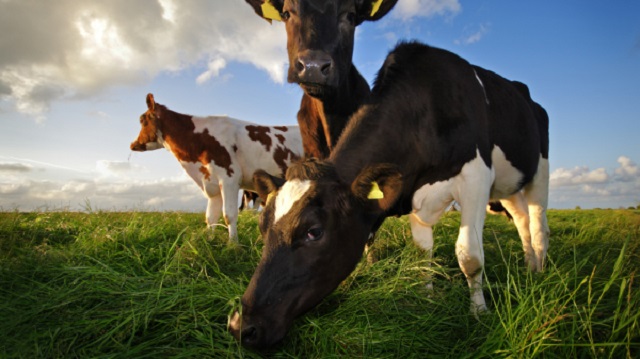
From Heartland Daily News
The United Nations Food and Agriculture Organization estimates that livestock production causes 11.1 of global greenhouse gas emissions worldwide, recommending people eat less meat to fight climate change.
Yet recent research suggests that under some climatic conditions or ecosystems, at least, cattle raising may actually result in lower emissions.
Alltech and Archbold examined the emissions from cattle raising in wetlands and ground that is regularly water laden. They found that although cattle accounted for 19 percent to 30 percent of emissions, the vast majority of the methane produced there was from the soil itself and the decomposing plant and animal life. As a result, they found, removing the cows actually produced a net increase in methane emissions.
Vaughn Holder, Ph.D., research project manager for beef nutrition at Alltech, who with Betsey Boughton, Ph.D., director of agroecology at Archbold, studied the impacts that cattle production has on the ecosystem on a wetlands pasture at Buck Island Ranch, about 150 miles northwest of Miami, Florida, notes that the production of agricultural emissions is more complex than simply ruminant eats plants = more methane emissions.
“There is a far more complex process in agriculture than it is in fossil fuel systems,” Holder told Just the News, which wrote:
Cattle are part of a carbon cycle. So if you just model the emissions coming from the animal, you’re missing the rest of the ecosystem, Holder said, which is absorbing carbon as a result of the animal being on the land.
When cattle graze on land, the plants prioritize root growth over the plant matter above the surface. The deeper the roots, the more plants sequester carbon in the soil through the photosynthesis process.
Grazing also removes grasses from a pasture, which reduces the dead plant matter that falls to the soil and decomposes, which also produces greenhouse gasses.
At the Buck Island Ranch, Boughton and her team measured the amount of greenhouse gases emitted on a pasture that had no grazing and compared it to pasture that had grazing. The data suggested grazing livestock were a net carbon sink compared to no grazing.
Of course, what’s true of a wetland’s ecosystem may not translate into more arid lands were cattle are often grazed, so more research is needed in order to know how cattle impact emissions in other environments.
However, as Holder and Boughton point out, quite aside from reducing emissions from wetlands, cattle and other livestock also consume a lot of plants humans can’t eat, turning them into them into edible proteins humans can consume, increasing global food security while reducing the emissions from the decomposition of the plants when they otherwise naturally die. In addition, livestock also consume a lot of food byproducts that humans either can’t or prefer not to eat, like orange pulp used in orange juice production. Although such byproducts can be used in composting, Holder notes, “composting increases emissions five times more than feeding it to dairy cows and byproducts disposed of in landfills produced 50 times more emissions than if it is fed to dairy cows.”
The research suggests that when accounting for livestock emissions, one should do an all-things- considered comparison, accounting for not just the emissions from cattle and sheep, but also from the material they consume that otherwise would have produced emissions by other means.
Sources: Just the News; Understanding the Carbon Cycle on a Cattle Ranch
Agriculture
The China – Russia “Grain Entente” – what is at stake for Canada and its allies?
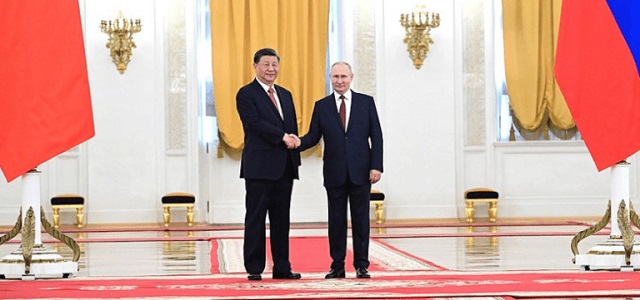
From the Macdonald Laurier Institute
By Serghey Sukhankin
Moscow – with China’s help, approval, and likely, guidance – intends to challenge the West by changing the rules of trade in foods critical to global buyers.
Throughout its entire history the Soviet Union faced one existential peril that was never solved until its collapse in 1991 – the prospect of food shortage and mass starvation. Its cumbersome, utterly ineffective, and artificially subsidized agricultural sector was a living testament to the erroneous nature of a planned command-administrative economic model.
The situation with food and staples became so dire that starting from 1963 the Soviet Bloc (the USSR, Hungary, Bulgaria, and Czechoslovakia) started importing wheat from the United States, Canada, and Australia. This practice continued until the demise of the Soviet Empire. Everything changed after the collapse of the USSR and introduction of market-oriented reforms in Russia in the 1990s, along with the growth of commodity prices and Russia’s inclusion in the global economic architecture.
By 2000, Russia had already doubled the amount of grain it produced, making it one of the world’s top producers of this strategic commodity. By the late 2010s to early 2020s, Russia emerged as a one of the world’s largest exporters of grain and agricultural products.
However, Russia quickly realized that commodities – especially food along with hydrocarbons – could become a very useful tool of coercion in geopolitical confrontations with its rivals. This became abundantly clear after the outbreak of Russia’s full-scale war of aggression against Ukraine in 2022, when both Russia’s top-tier politicians (such as Deputy Chairman of the Security Council and former President Dmitry Medvedev) and chief propagandists (such as Margarita Simonyan, the editor-in-chief of the Russian state-controlled broadcaster RT) claimed “hunger” to be Russia’s natural ally, and threaten to cut supplies of food staples to “unfriendly countries.”
At the same time, Russia tried to spark a confrontation between Ukraine and Poland, Hungary, Slovakia over commodities and staples supplies. Ironically, rather than hurting the West, Russia’s actions had a worse impact on so-called “friendly countries” – especially those in the Global South, where access to inexpensive and available foodstuffs is a matter of life and death.
Russia’s strategy of intimidation was also ineffective due to its invasion of Ukraine in February 2022. Its so-called “special military operation” was supposed to be quick and decisive. Two years later, the war has imposed massive pressure on the Russian budget, requiring a constant cash flow that mainly comes from exporting raw materials and commodities.
Forced to evolve its strategy, Russia seems to be abandoning its plan of threatening to starve its adversaries. Instead, Moscow – with China’s help, approval, and likely, guidance – intends to challenge the West by changing the rules of trade in foods critical to global buyers. This strategy is being implemented via pursuit of two interrelated initiatives: formation of a “Grain Entente” between Beijing and Moscow, and the use of the BRICS trading bloc (consisting of nine nations led by founding countries Brazil, Russia, India, China, and South Africa) as a critical vehicle of change.
The first major step in this direction was made in October 2023, when the Russian Food Export Trade LLC company and China Chengtong International Limited concluded the “grain deal of the century” – the largest contract of this type ever signed between the two countries – according to which the Russian side pledges to deliver 70 million tons of various types of grain (produced in the Urals, Siberia, and the Far East) over the next twelve years for US$26.5 billion. As a result, already in the first quarter of 2024, Russia broke a historical record by supplying China with large volumes of oats (.7 times more than the previous year) and buckwheat (3.3 more than the previous year) receiving a staggering US$127 million. Yet, mounting grain sales is only the tip of the iceberg. The most critical development is China’s gradual overtaking of Russia’s logistical infrastructure, which could pave the way for China’s growing control over Eurasian logistics and trade routes.
In September 2023, officials from Russia and China met at the 8th Eastern Economic Summit in Vladivostok, where officials from Russia and China agreed to create a logistical hub – the “Grain Terminal Nizhneleninskoye–Tongjiang” in the Jewish Autonomous Oblast. The goal is to create the Russia’s first “land-based grain fleet.” Consisting of 22,000 containers transporting grain, it will be capable of moving up to 600,000 tons of grain with a maximum storage capacity of up to 8 million per year. The strategic significance of this move is clear. On one hand, it allows Russia to “safeguard” itself against sanctions pressure, which will likely make Russia’s behaviour in Europe (and elsewhere) even more aggressive and unpredictable. On the other hand, China – which will acquire de facto control over Russia’s grain – will see Beijing become the world’s largest grain hub, giving it enormous power to influence and set global food prices.
Russia’s next major move was to push for the creation of a BRICS grain exchange. Fully supported by Russian President Vladimir Putin, the proposed grain exchange would bring together some of the world’s biggest grain buyers and exporters, cumulatively accounting for more than 42 per cent of global grain production (at nearly 1.2 million ) and 40 per cent of global consumption. International observers and subject experts have already warned that Russia- and China- adverse exporters of grain and agricultural products such as the United States, Canada, and Australia “might face challenges in maintaining their market share and negotiating for favourable trade terms, while facing competition from cheaper Russian .” In effect, this may have “significant implications for global agricultural dynamics, ranging from geopolitical and geoeconomic realignments to increased competition in agricultural trade. For traditional exporters such as Australia and the US, it is a call to reassess their national policies and strategies to navigate the evolving landscape of international trade to maintain competitiveness.”
The emergence of the BRICS grain exchange – which will undoubtedly increase Russia’s (and most likely China’s) geoeconomic role – is only a part of a much bigger strategic challenge. If the BRICS grain exchange is successful, it will have a spillover effect on another critical product – the fertilizers required by both developed and developing nations. Russia already has a competitive advantage in fertilizer production, and post-2022, has tried to use its fertilizers as geopolitical tools pressuring international organizations (such as the United Nations) to lobby for the end of sanctions imposed on Russia after its full-scale invasion of Ukraine.
– If the Russia-China grain alliance proliferates and BRICS becomes a major player in the global flow of grains and other foodstuffs, it could prompt even greater changes to the established world market. Analysis of Russian-language sources and publications indicates that the next step would be the creation of an alternative to the “West-dominated” financial architecture, and ultimately, the transformation of global trade.
Russia’s plans (undoubtedly supported by China) pose a very serious challenge to Canada, its allies, and other liberal democracies.
They will likely suffer economic losses of grain exports due to the cheapness of Russian grain, and that country’s current occupation of a large part of Ukraine’s most fertile black-earth areas. If unchecked, Russia could assume control of more than 30 percent of global grain supplies.
Currently, the Indo-Pacific region is Canada’s largest export destination, with agriculture and food exports totaling $9.4 billion in 2022. If China gains unfettered access to Russian grain, it could seriously undercut Canada’s trade.
Making matters worse for Canada, its relationship with New Delhi is arguably at an all-time low, making it challenging to pivot sales of its agricultural products toward India or other countries without significant economic losses.
Looking at the bigger picture, there are a host of other potential threats to the global foods market, from the ongoing war in Ukraine to droughts and adverse climate conditions in the US, Argentina, and Australia. Amid growing uncertainty and upheaval, it’s possible that the global foods market will be carved up and dominated by Russia and other undemocratic, aggressive nations. Given Russia’s strategic goal of weakening the European Union, and ultimately causing its disintegration, it will continue to use artificially created food shortages in Africa and the Greater Middle East as a geopolitical weapon against the EU. The Kremlin hopes to replicate the crisis that occurred in 2015, when hundreds of thousands (now, potentially millions) of illegal migrants and asylum seekers poured into the EU – wreaking havoc, fostering intra-EU conflict, and assisting the rise of far-right (and left) populists.
The first step in Russia’s grand strategy is the de facto establishment of the Russo-Chinese “Grain Entente.” The next move will be the creation of a BRICS grain exchange and inclusion of other strategic commodities under the umbrella of BRICS operations. This is clearly a wakeup call for the West. We need to heed it, or else risk more dire, far-reaching consequences.
Dr. Sergey Sukhankin is a Senior Fellow at the Jamestown Foundation (Washington, DC) and a Fellow at the North American and Arctic Defence and Security Network (NAADSN). His project discussing the activities of Russian PMCs, “War by Other Means,” informed the United Nations General Assembly report entitled “Use of Mercenaries as a Means of Violating Human Rights and Impeding the Exercise of the Right of Peoples to Self-Determination.”
This article was published with support from Konrad-Adenauer-Stiftung Canada.
-
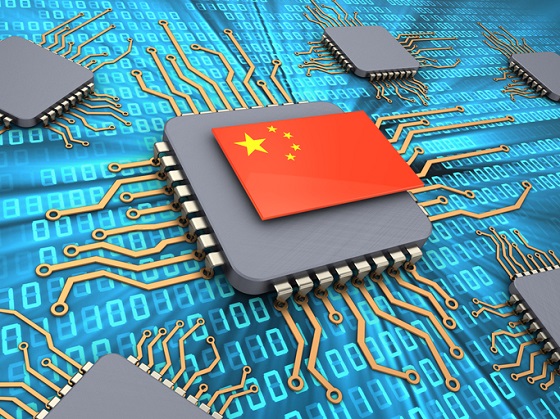
 Automotive2 days ago
Automotive2 days agoForget Tariffs: Biden Should Look to Domestic Mining to Thwart Chinese EVs
-
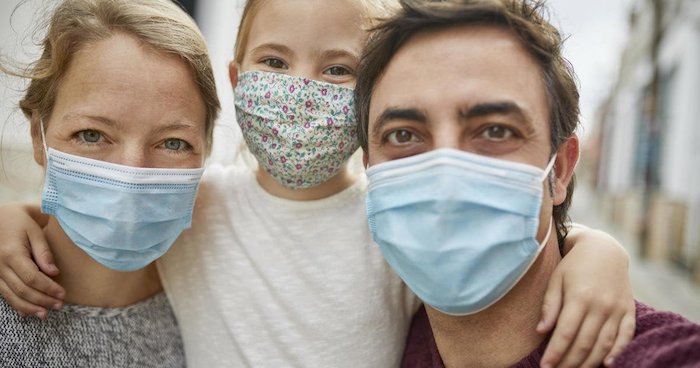
 COVID-1911 hours ago
COVID-1911 hours agoWenstrup Releases Francis Collins’ House Testimony
-

 Great Reset2 days ago
Great Reset2 days agoCanadian MP warns new WHO pandemic treaty may enshrine COVID-era freedom restrictions
-
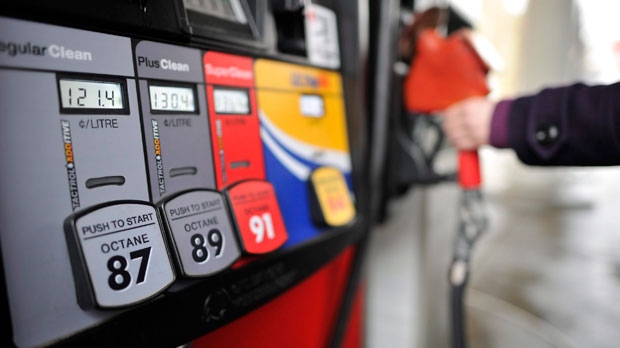
 Economy2 days ago
Economy2 days agoOil Lobby Working With Republicans Behind-The-Scenes To Push ‘Gateway’ To Carbon Tax
-

 Frontier Centre for Public Policy1 day ago
Frontier Centre for Public Policy1 day agoThey spent $8,000,000 without putting one shovel in the ground
-

 Agriculture1 day ago
Agriculture1 day agoResearch Suggests Cattle Raising May Reduce Emissions



